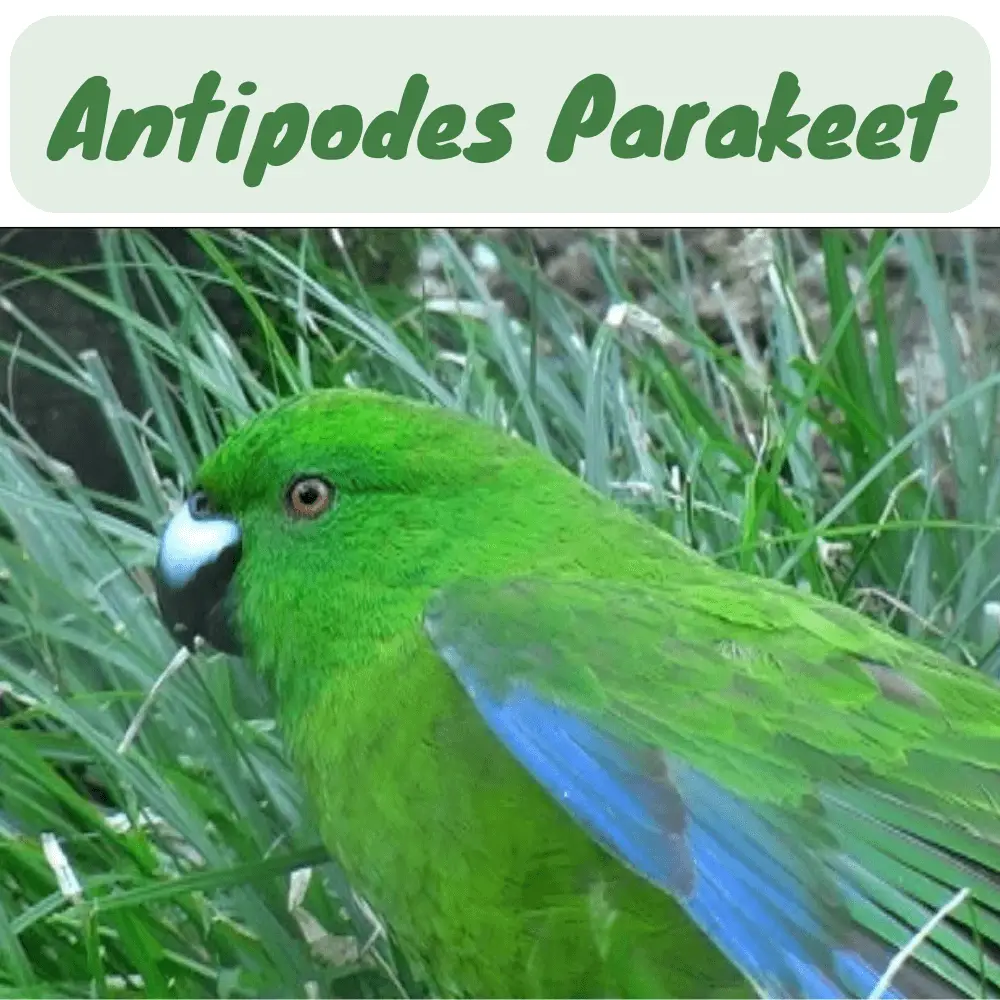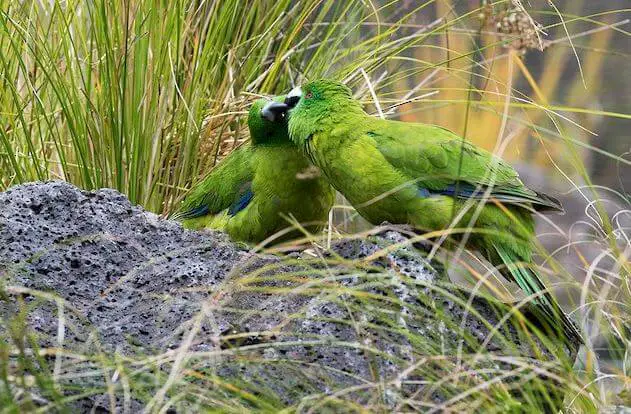
Antipodes Parakeet or Antipodes Island parakeet 30 cm. Green, bright emerald on forehead and face, olive on the rest of the plumage, yellower below; outer webs of primaries purplish-blue, tail margined yellow. Immature undescribed.
Monotypic.
Subspecies
Monotypic.
Distribution
Antipodes I and its islets (Archway, Bollons, Inner Windward, and Leeward).
Habitat
Tall dense Poa litorosa tussocks, especially on coastal slopes and along watercourses, whereas sympatric C. novaezelandiae tended to occupy more open terrain.
Antipodes Island parakeet – New Zealand Bird of the Week
SOURCE: Henry the PaleoGuy
Movement
Sedentary.
Diet and Foraging
Poa and Carex leave comprised 70% of records, with seeds (13%), berries, flowers, and other vegetation (10%), and carrion of penguins and petrels (6%).
Sounds and Vocal Behavior
Antipodes Parakeet Calls include a chattering low-pitched “kok…” with a bubbling quality, soft clucking, loud high-pitched chatters, and soft single notes.

Breeding
Oct–Jan. Antipodes Parakeet Nest in a well-drained burrow, 1 m or more long, excavated in fibrous peat beneath vegetation or in thick matted bases of tall tussocks. Clutch size unknown, but 1–3 fledged young recorded.
Conservation Status
VULNERABLE. CITES II. A BirdLife “restricted-range” species.
Generally common, with a total population estimated at 2000–3000 parakeets. The only threat to this bird is the accidental introduction of some predator (rats or cats) from a fishing or other passing vessel;
although once a remote possibility, increased fishing pressure in waters around the (uninhabited) Antipodes has greatly heightened the chances of such an event.





















